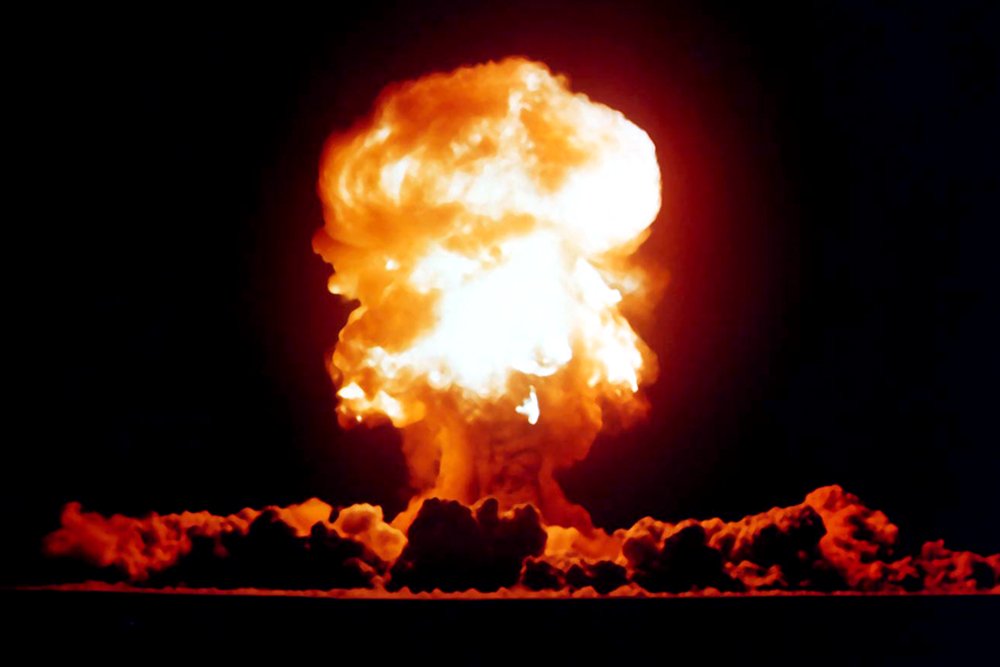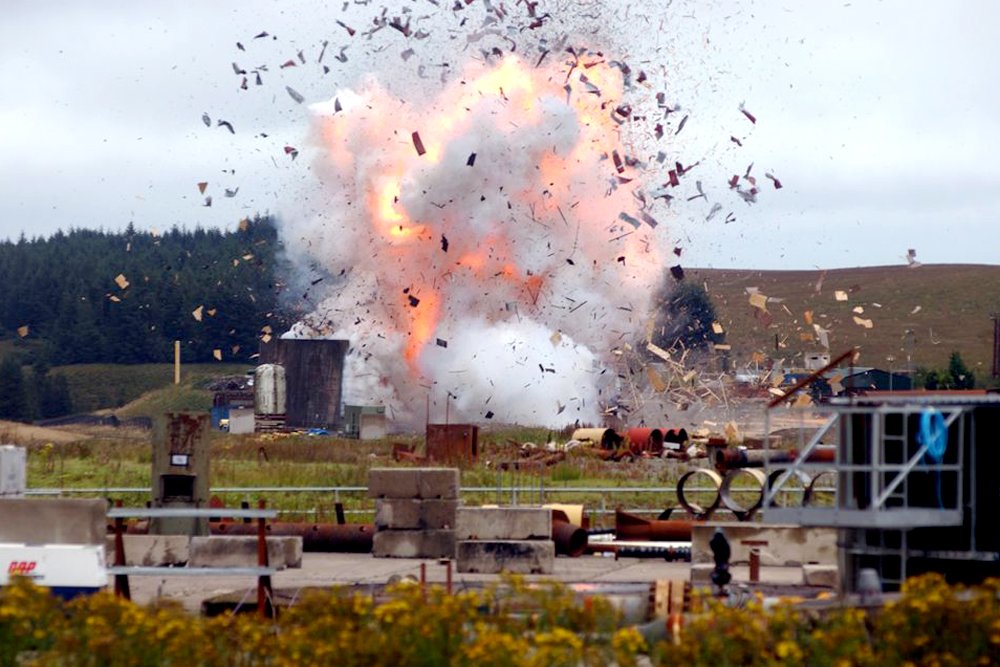Table of Contents (click to expand)
Nitrogen is used in explosives because it is a key ingredient in causing a rapid exothermic reaction. The rapid nature of the reaction produces a burst of energy in the form of heat and light, which is powerful enough to sweep people, trees and cars right along with it.
The use of nitrogen in an explosive is ironic because a molecule of nitrogen gas (N2) represents one of the most stable bonds we have ever discovered. If nitrogen is explosive, why hasn’t the atmosphere, which is mostly nitrogen, ever succumbed to devastating explosions?
Still, if it weren’t for nitrogen, TNT or dynamites would have been about as explosive as cheese or sand. So, what then makes nitrogen the magic ingredient?

How Do Explosives Work?
At the heart of any explosive are chemicals mixed in a perfect ratio participating in what is called an exothermic redox or a reduction-oxidation reaction. A redox reaction is a type of chemical reaction that requires its reactants to exchange electrons. The reactant losing its electrons is said to be ’oxidized’, while the reactant that gains these very electrons is said to be ‘reduced’. In the case of an explosive, this transaction is exothermic, meaning that it releases heat upon completion.
For instance, the mixture of potassium nitrate, carbon and sulfur in the perfect ratio constitutes what is popularly known as gunpowder. A chemical reaction is triggered when the mixture is exposed to heat or even a mere spark. The oxidized species are carbon and sulfur, while the potassium nitrate is reduced. The reaction, being exothermic, also releases a burst of energy in the form of heat and light.

However, an exothermic reaction does not guarantee an explosion. The rusting of iron is also caused by an exothermic redox reaction, but I have yet to see a corroded nail abruptly explode. The key to causing an explosion is not just any exothermic reaction, but a very quick one. Rusting does not cause iron to explode because it is an extremely slow and prolonged process.
When a detonator triggers the reaction either physically, chemically or electronically, the mixture undergoes a phase transition from solid or liquid to gas. The heat released in the reaction increases the temperature of this gas. However, the quick nature of this reaction means that the transition and consequently the expansion of this gas is tremendously rapid.

A single gram of TNT produces almost one liter of gas in seconds, which is a thousand-fold increase in volume! Therefore, the energy and pressure that is released, almost instantaneously, propagate outwards as a swift shock wave that is powerful enough to sweep people, trees and cars right along with it.
Also Read: Can Spaceships Actually Explode Like They Do In Movies?
Immense Stability
Nitrogen is a crucial constituent of an explosive for the simple reason that its highly unstable compounds, when incited, will rapidly decompose into nitrogen gas, a ridiculously stable compound. However, why should the production of a stable compound from an unstable compound release such a staggering amount of energy?
Well, before synthesizing nitrogen compounds such as nitroglycerine, the major ingredient of dynamite, or trinitrotoluene, popularly known by its initials TNT, we must first break the nitrogen compound into individual nitrogen atoms. Separating a stable compound such as nitrogen into its constituents is like separating two wet pages that have gotten stuck together: it requires a lot of energy to do so. Thus, when the process occurs in reverse, that is, when the atoms recombine to form nitrogen gas, the same amount of energy is produced.
Thus, a reaction is more exothermic when it produces more stable compounds. This is why, while oxygen is obviously necessary for combustion, explosives are replete with it because its compounds, like nitrogen’s, rapidly decompose to form oxygen molecules, an equally stable molecule. Another explosive favorite is carbon.
Even though gasoline, which also fosters these elements, boasts more potential energy than TNT, the latter explodes because, first of all, it is highly unstable, and second, as mentioned, because of the reaction’s rapidity, because of the high velocity with which the energy and gases are released.
In fact, to witness nitrogen’s rage, simply pour some liquid nitrogen into a bottle and subject it to room temperature. The formidably dense, unstable compound will rapidly convert into nitrogen gas. A bottle not strong enough to stifle this expansion will easily blow apart. However, a bottle strong enough to stifle the explosion would actually pressurize it, thereby setting it ablaze. The seemingly innocuous act will eventually culminate in a sudden Kaboom!
Also Read: Why Has Life Evolved To Depend On Oxygen Instead Of Nitrogen?
How well do you understand the article above!

